Military smartphone

How do you imagine modern promising military developments? Crawler fighting robots, bones breaking in the wind; urban drones breaking low gray skies at high speed; soldiers in exoskeleton with miniguns; Neon laboratories buried in ancient rock formations are our approximate associative series made up of popular science news, science fiction films and scandalous articles (“the military hide a terrible secret!”).
It is believed that the military diligently hide from the public the development of the cutting edge of science. That in the secret laboratories of the Homeland is created the iron of the future, working on a trouble-free software. The conquest of space, the emergence of the Internet, the introduction of new composite materials - all this is a consequence of the arms race. Transnational corporations can only envy the success (and budgets) of the military.
')
It is even more interesting to find out how the advanced technologies in the army are the most potential adversaries. Troops need “special category smartphones”, but can such technologies be useful to “ordinary” customers?
Call from the battlefield
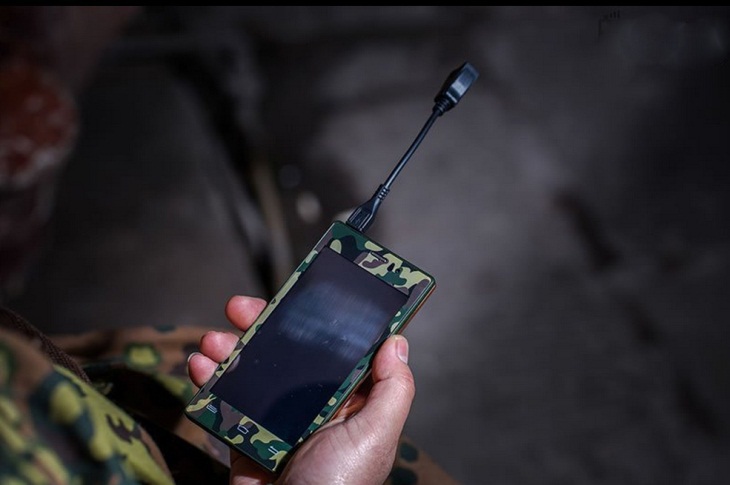
We are accustomed to good, fast, convenient smartphones. They are available to almost everyone. But if you are a soldier sent to a war zone, then forget about familiar applications, LTE communications and other joys of civilization. The US military leadership rightly feared that the soldiers, using conventional smartphones, would seriously violate security requirements (and be distracted by the built-in games) and instructed DARPA to create customized versions of "civilian gadgets."
Not news that DARPA - the hero of many articles on Habré - is engaged in a huge amount of applied research, in which the development of weapons does not play the most important role. However, an attempt to put public mobile technologies on the track of serving the god of war is an interesting new trend.
Radio and paper maps are used in the army of any country in the world. This combination of tools has long been morally obsolete, and this is a problem that needs to be solved. And if you think that it is enough to replace the radio and the card with any physically ultra-secure smartphone, then you are mistaken. DARPA spent several years building the foundation for an ecosystem of applications called the Transformative Apps (TransApps) program. This is a kind of application store for the military, which contains programs created for work in an unsafe environment and in the absence of reliable communications.
Devices on the smartphone market have one common drawback - network dependency. As soon as the network disappears, you have an expensive calculator with flashlight function on your hands. Such a situation is unacceptable in conditions of real hostilities, where the absence of any type of communication is common. Even if the cellular infrastructure survives the fighting, communication signals will be intercepted by the enemy.

Working with maps in real time, sharing information (even just calling each other), managing a combat drone - all this can be done from a regular smartphone if you have a secure network that can be used in the most remote places or cities destroyed by the war.
You do not need to create a military smartphone from scratch, you can for this take the basis of any "civilian" apparatus. The question is - how to connect it. When civilian networks cannot be trusted, the military will be forced to deploy secure networks on the fly. And in TransApp there is already a system to which the military can connect to provide communication. Even if the fighter is out of the network coverage area, all applications will retain their functionality.
Field work

The DARPA cellular network uses modified mobile military radio stations that encrypt a signal as base cells. In addition, technologies have been developed that replace vulnerable communication nodes: the “timing & inertial measurement unit” device set consists of six inertial measurement sensors (3 gyros and 3 accelerometers) and one high-precision clock generator, which allow tracking an object's movement in the absence of a GPS signal.
DARPA even develops a thermal imager that can be embedded in a smartphone, but for the most part, a military gadget is a rethinking of publicly available commercial technologies based on popular smartphone models and the Android operating system.
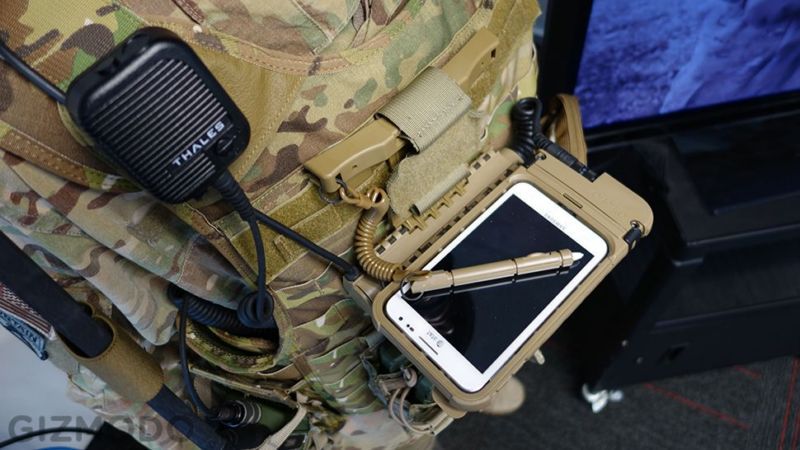
DARPA engineers have admitted that they have sympathy for the Samsung Galaxy Note 3. The soldier’s smartphone is located in a special box-pouch, which is attached to the front of the body armor. Thanks to this mount, both hands remain free, and at the same time the display remains in sight. On the reverse side there is an additional rechargeable battery that allows you to power the device for a week.
Why Samsung? The military tried to make their own smartphone, but the attempts were unsuccessful. “Patriotic” devices could not compete with products that won the hearts of millions of people on the consumer market. The TransApp team has compiled a short list of smartphones and tablets suitable for the tasks and amenable to the necessary modifications. The devices were tested in conditions as close as possible to the combat ones. As a result, the choice fell on Samsung.
Army app store
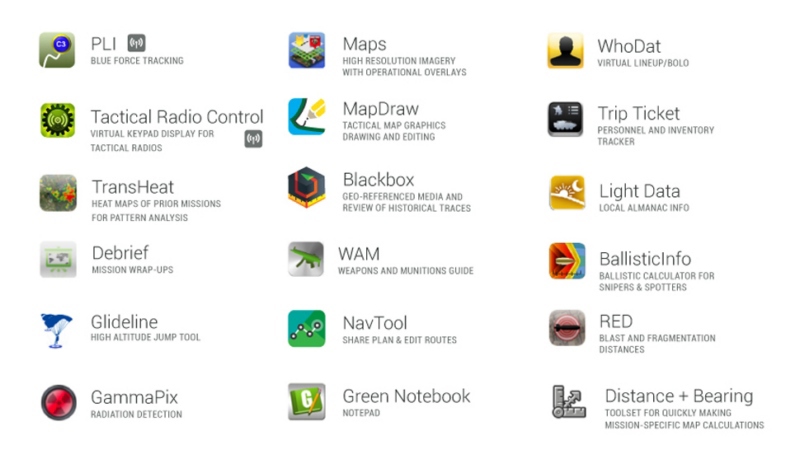
Unfortunately, we know very little about applications for a military smartphone. When it comes to a system that is designed to control UAVs in order to accurately determine the positions of terrorists based on cellular network signals, the military becomes terribly secretive. Journalists who tested military smartphones note that applications most often look like modified versions of “civil software” that can work without a network.
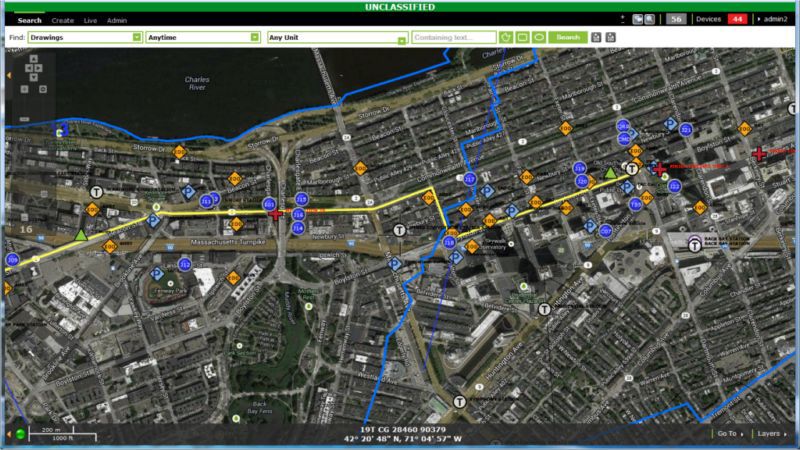
The map reflects all units involved in the special operation, starting with the FBI and ending with the fire service.
Thus, plug-ins have been added to the usual Google Maps, which allow displaying additional information - from the mission plan to the location of the drones. The TransHeat application saves the history of the movements of the soldier and shows unexplored and potentially dangerous areas on the map. The PLI application provides synchronization of movement data of various units to avoid losses from friendly fire.
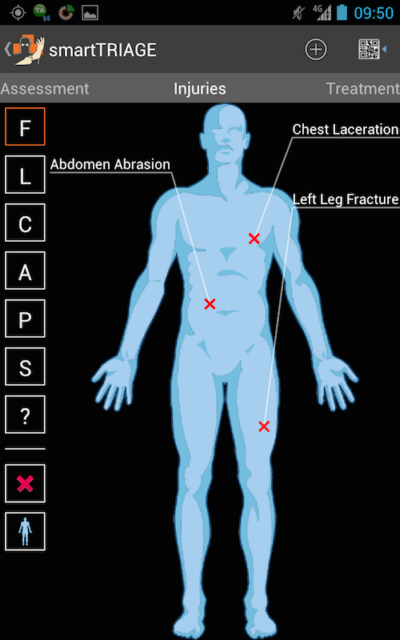
In the SmartTRIAGE application for medical care, you need to click on the human figure, select the symptoms and get a treatment plan.
How do you like this: a ballistic calculator for snipers, a reference manual on weapons and ammunition, a program for compiling reports on tasks. GammaPix measures radiation levels, and SmartTRIAGE helps physicians assist in injuries and other health problems on the battlefield.
The soldiers have their own "analogue" of Facebook. There is a function to add notes, as well as sorting by groups: good, bad, friends, UN team, local residents. For recruits, the ability to get such functionality in the usual Samsung Galaxy is an important stage of quick adaptation to military conditions.
Of course, smartphones must withstand high temperatures, be protected from dust, and, if necessary, self-destruct by a remote command from headquarters. But without a developed ecosystem of applications created by a team of developers in a style that more closely resembles a start-up than a defense department, all technological innovations would be useless. That is why the US Department of Defense is looking at the use of Google and Samsung technologies. If the environment is convenient for both developers and end users, then everyone will feel the benefits of using civil mobile technologies.
In a globalized world, different institutions, be it a transnational corporation or a military ministry, inevitably serve the common goal of technology development. Already, TransApp programs save lives, are used by the presidential guard and some fire brigades. The ideas embodied in this system (favorable exchange of information with other devices in accessibility, preservation of full functionality without access to the network, performance under extreme conditions) will also be reflected in the open-source application market.
In conclusion, I would like to say a few words about the moral side of the issue. It depends on us whether the technologies will save lives or take them away - after all, it is not a smartphone itself that triggers rockets or an ambulance, but a person calls an ambulance. Therefore, this article, in fact, is not about how the smartphone is put at the service of the god of war. We want to believe that among the TransApp developers there is an entrepreneurial spirit, that they have an innovative view of the world, and everything created by them will ultimately benefit and not harm anyone.
Prepared on the material " Inside the Military's Secretive Smartphone Program "
Source: https://habr.com/ru/post/233427/
All Articles